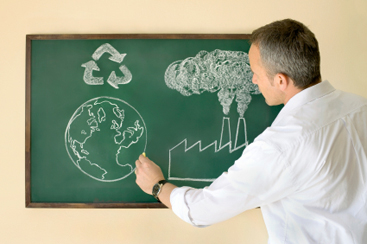|
|
| Preparing for a Green Cleaning Program in Your Facility |
| By Stephen P. Ashkin |
| Published: 12/15/2014 |
 While the Green, Green Cleaning, and sustainability movements have been growing for nearly two decades in most industries and types of facilities throughout the country, this can not necessarily be said of correctional and juvenile justice facilities. According to Paul Sheldon, Senior Advisor at GreenPrisons.org and a leading advocate for Greening correctional facilities, some states, most notably “California, Oregon, Washington, Indiana, Illinois, and South Carolina, [have been] forerunners in implementing green principles and concepts; [however] the majority of juvenile justice facilities do not seem to have done much in the area of ‘green’ practices.”
While the Green, Green Cleaning, and sustainability movements have been growing for nearly two decades in most industries and types of facilities throughout the country, this can not necessarily be said of correctional and juvenile justice facilities. According to Paul Sheldon, Senior Advisor at GreenPrisons.org and a leading advocate for Greening correctional facilities, some states, most notably “California, Oregon, Washington, Indiana, Illinois, and South Carolina, [have been] forerunners in implementing green principles and concepts; [however] the majority of juvenile justice facilities do not seem to have done much in the area of ‘green’ practices.” But, that is likely to change in the coming years, especially as it pertains to cleaning strategies, if for no other reason than that so many manufacturers of professional cleaning chemicals, tools, and equipment are focused on developing environmentally preferable cleaning products. The selection of environmentally preferable cleaning products continues to expand significantly, largely driven by customer demand. In fact, we have entered an era today where most facility managers and purchasers will select a Green Cleaning product first and only consider a traditional—non Green—product if a Green product is not available, performs poorly, or is too expensive--conditions being encountered less and less frequently today. Green Cleaning systems and strategies are likely “in the cards” for correctional facilities, and administrators of many locations are aware they will soon have to grapple with a number of questions about Green Cleaning--from what it is, what determines if a product is environmentally preferable, to how to implement a Green Cleaning program. Below, we will address these issues one by one with the goal of making the transfer to Green Cleaning as easy as possible. Getting the Basics Under Our Belt If you are not totally sure what Green Cleaning is, or what it entails, you are not alone. Many administrators, even many in the professional cleaning industry, still have a hard time answering this question. Green Cleaning is the use of products, methods, and procedures designed to reduce cleaning’s impact on the environment. We can also add that while this is the ultimate goal, these products, methods, and procedures must also result in effective cleaning performance that protects the health of the user of the products as well as building users (staff and inmates, in this case). Determining if a product is Green or not has been a quandary for many administrators for decades; however, this should no longer be an issue. Starting in the late 1980s, independent organizations have developed criteria and standards as to what an environmentally preferable product is, what ingredients it should not have, how it should be packaged, even how it should be eventually disposed of. Products are then evaluated in third-party laboratories to see if they meet these criteria. If so, the product may bear the “mark” or label of the certification organization, which makes it very easy for administrators to select Green Cleaning products. We should note that just because a product is certified Green today does not necessarily mean it will be certified Green in the future. For one thing, certification is typically for a set period of time, three to five years for instance. Additionally, the bar is invariably being raised; over the years some products have needed to be reformatted to retain their Green certification status. Implementation With these basics clarified, the next big issue that typically comes up is how to implement a Green Cleaning program. The following are some of the steps most facilities find necessary in transferring to a Green Cleaning program:
Stephen P. Ashkin is president of The Ashkin Group, a consulting firm specializing in greening the cleaning industry and CEO of Sustainability Tool LLC, an electronic dashboard that allows organizations to measure and report on their sustainability efforts. He is also coauthor of both The Business of Green Cleaning and Green Cleaning for Dummies . |
MARKETPLACE search vendors | advanced search

IN CASE YOU MISSED IT
|


Comments:
No comments have been posted for this article.
Login to let us know what you think